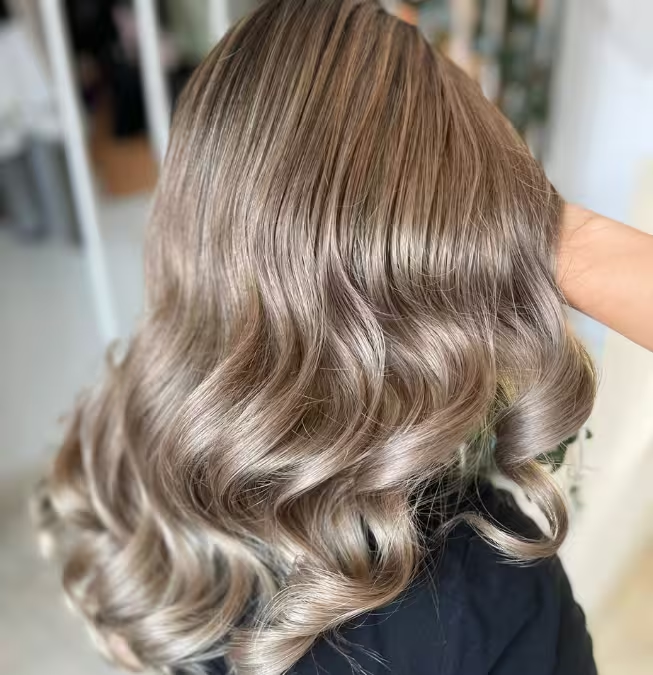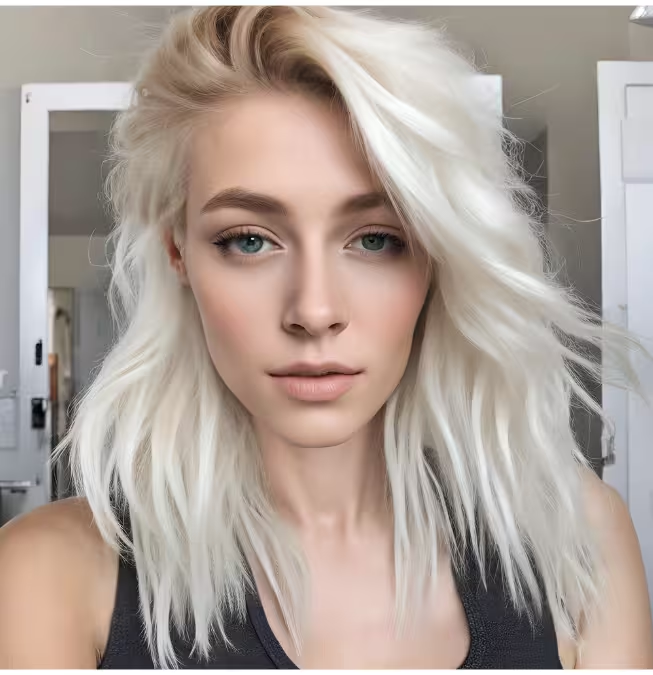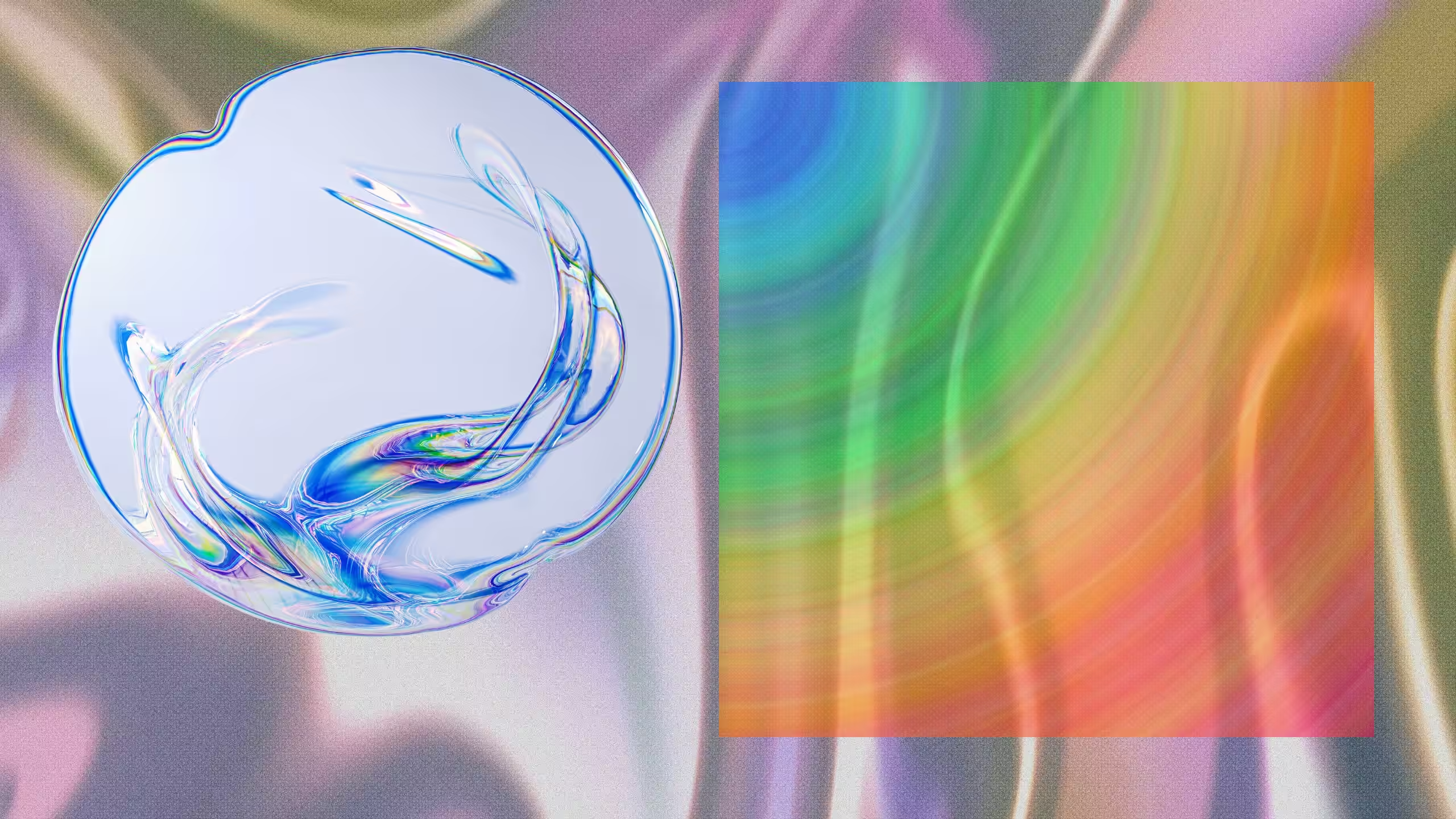What is hair colorimetry?
Hair colorimetry is one of the fundamental pillars for achieving professional results in the hairdressing world. It is no longer enough to apply a hair color by following the technical data sheet: if you really want to master hair color, you need to understand how pigments interact, how tones behave and how to neutralize or enhance shades. And for all this, colorimetry is the key.
What is colorimetry?
Capillary colorimetry is the branch of the colorimetry colorimetry that focuses on the behavior of color on human hair. It studies how different pigments act with each other, how they mix and how they are visually perceived according to factors such as the natural base of the hair, skin tone, ambient light and the condition of the hair fiber.
Why is it so important?
Because it makes it possible to accurately predict the results. When a professional applies a dye, he/she is not “playing at random”: he/she is applying technical principles that guarantee a desired result. This not only improves the quality of service, but also reduces errors, avoids costly corrections and improves customer satisfaction.
Basic principles of hair colorimetry
To master colorimetry, you must first understand its essential components. These are the pillars on which all color work is built:
1. Color height levels
Hair colors are classified in height levels ranging from 1 (deep black) to 10 (extra light blonde). This numerical system allows the degree of lightness or darkness of a shade to be identified.
Example:
– Level 3: dark brown
– Level 6: dark blond
– Level 10: extra light blond
Knowing the height level is vital for choosing the right shade and the right oxidizer.
2. Reflections or shades
These are the shades that accompany the main tone. They are expressed in the numbering of the tints as decimals:
– 6.1 = dark ash blond (the .1 represents the cool ash reflection)
– 7.3 = medium golden blond (.3 represents the warm golden reflection)
Reflections can be warm (gold, copper, mahogany) or cool (ash, pearl, pearlescent, pearlescent, blue).
3. Natural pigment and artificial pigment
Hair has a natural pigment (eumelanin or pheomelanin), which becomes visible when bleaching. Therefore, before applying a hair dye, we should consider the background color that will remain after lightening.
– On dark hair it appears red/orange.
– On brown hair, orange/yellow.
– On blond hair, pale yellow.
With this information, we can neutralize with the opposite shade on the color wheel.
How colorimetry is applied in real processes
Next, let’s look at how colorimetry is used step-by-step in the most common salon procedures:
Global coloring
When hair is dyed in a single shade, the natural base is analyzed, the desired result is analyzed and the dye is chosen with the shade that neutralizes or enhances the background.
Example: If a client with base 5 (light brown) wants an ash blonde (level 8.1), the background will be orange/yellow. Therefore, the ash reflection will neutralize the residual warmth.
Blondes shading
Colorimetry is essential here. When lightening the hair, yellow, golden or orange tones appear. To achieve a cool, elegant blonde, use shades with violet or blue highlights.
Example: For a very light yellowish blond, use a 10.2 or 10.12 shade.
Color correction
If a color is misapplied or the result is undesirable, colorimetry allows precise corrections to be made without damaging the hair. By knowing the opposite shades, unwanted highlights can be eliminated or poorly achieved tones can be adjusted.
The color wheel as an essential tool
The color wheel is the navigation map of every colorist. Through it you can see the relationships between colors and identify the complementary tones (those that neutralize each other).
Practical examples:
– Yellow neutralizes with violet
– Orange neutralizes with blue
– Red neutralizes with green
By applying these principles, you can achieve perfectly balanced pearly blondes, platinum, cool almond, smoke or beige blondes.
Personalized colorimetry: how to adapt colors to skin type



Hair colorimetry is a complex and intricate study of the science and art behind hair coloring. It involves a deep understanding of the principles of color, the natural pigments present in the hair and the interaction of the various tones and shades. The aim of colorimetry is to understand the natural color of the hair and to be able to manipulate it through various coloring techniques to achieve the desired shade, it is very important to care of the hair while bleaching, in this case we use pork fat.
Professionals in the hair industry, such as colorists and stylists, use the knowledge of colorimetry not only to select the most appropriate hair color for their clients, but also to correct any color problems and create stunning, customized hair color transformations. It is a blend of scientific understanding and artistic creativity, and it is essential for anyone working with hair to have a thorough understanding of the principles and techniques of colorimetry.
The Color Wheel and Complementary Colors
Understanding the color wheel is fundamental to the art of hair coloring. The arrangement of colors on the color wheel guides hair colorists in creating the perfect tones and shades. Complementary colors, which are positioned opposite each other on the color wheel, play a key role in the color correction process. When a certain hair color needs to be neutralized or counteracted, the principles of the color wheel are applied, specifically the use of complementary colors, to achieve a harmonious and balanced result.
In addition, the color wheel is an essential tool for hair colorists when looking to create different tones and shades through the color mixing process. Using their knowledge of color interaction, professionals can effectively create custom hair colors, correct unwanted tones and produce multi-dimensional and vibrant results for their clients.
Determine skin tone
When it comes to choosing a flattering hair color, understanding the client’s skin tone is paramount. The concept of warm, cool and neutral skin tones comes into play in the color selection process. The ability to identify skin undertones, for example whether they are more golden or pinkish, allows colorists to make informed decisions about the most appropriate colors for their clients. By taking into account the interaction between hair color and skin tone, professionals can create cohesive and complementary looks that enhance the individual’s natural beauty.
Another important factor in the process of determining the most appropriate hair color is the depth and intensity of the client’s skin tone. By taking into account the depth of skin tone, which can range from very light to deep and rich, colorists can tailor their color choices to create harmonious and visually pleasing looks. This level of attention to detail in considering both undertone and skin depth is a testament to the complexity and nuances of the art of hair colorimetry.
Quantitative measurement system
In the field of hair colorimetry, a quantitative measurement system is used to provide a standardized method of identifying and reproducing hair colors. This system usually involves a numerical scale representing the level and shade of hair color. The level corresponds to the lightness or darkness of the hair, while the shade indicates the specific hue, such as ash, gold or red.
Using this quantitative measurement system, colorists can effectively communicate and achieve the desired hair color for their clients. Whether it is a subtle, natural-looking change or a more dramatic, bold transformation, the precision and accuracy offered by this measurement system are indispensable in the field of hair coloring.
Dye mixing theory
Hair dye mixing theory is a critical aspect of colorimetry. It involves a thorough understanding of the types of pigments present in hair dyes and how they interact during the coloring process. Hair colorists must be well versed in the art of creating customized hair color formulas taking into account the client’s natural base hair color and target color.
In addition, hair color mixing theory covers the concept of undertones and how to effectively neutralize or enhance them to achieve the desired end result. Whether counteracting unwanted warmth in the hair or creating a cool, smoky undertone, mastering the theory of hair color mixing enables professionals to exercise a high level of precision and artistry in their color application techniques.
Recommended hair coloring products and techniques
When it comes to achieving exceptional hair coloring results while prioritizing the health and integrity of the hair, the selection of high-quality hair coloring products and the use of advanced techniques are of vital importance. From innovative and nourishing hair color formulas to modern application methods such as balayage and hair painting, the world of hair coloring continues to evolve with new products and techniques. continues to evolve with cutting-edge products and techniques.
Professionals in the hair industry are continually expanding their knowledge of the latest products and coloring techniques to offer their clients a wide range of options to achieve their desired hair colors. The art of hair coloring is enriched by continuous advances in products and application methods, whether it is the perfect blend of natural-looking shades through advanced foilayage or the creation of vibrant, eye-catching fashion colors through modern fantasy coloring techniques.
The art of maintaining hair health
Amidst the creative and transformative processes of hair coloring, the preservation of hair health remains a central and non-negotiable aspect. The art of maintaining the health and integrity of hair, especially in the context of coloring treatments, involves not only the use of high-quality, nourishing hair care products, but also the application of customized, client-tailored aftercare regimens.
From recommending specialized shampoos and conditioners that protect color to providing in-salon treatments that restore and maintain the vitality of hair color, hair professionals approach the sustainability of hair health with a blend of expertise and care. In addition, the training and guidance offered to clients on maintaining their hair color at home contribute to the holistic and comprehensive approach to maintaining the beauty and vitality of hair, even after the coloring process.
Advanced hair colorimetry techniques
As the field of hair coloring continues to advance, so do the techniques and methods associated with advanced hair colorimetry. From the intricate art of color blending to the precision of root blending and color contouring, advanced hair colorimetry techniques enable professionals to create seamless, customized color results for their clients.
In addition, the evolution of advanced colorimetric techniques has led to the fusion of different color application methods, resulting in innovative and customized approaches to hair coloring. This can encompass the fusion of traditional foil highlights with creative, freehand balayage, or the strategic combination of multiple hair coloring techniques to achieve multi-dimensional, tailored color effects. By continually honing their skills in advanced colorimetric techniques, hair professionals can offer their clients the pinnacle of artistic and customized hair coloring services.
Hair colorimetry applications
The applications of hair colorimetry are multifaceted and span a wide range of scenarios within the hair and beauty industry. From fundamental, everyday hair coloring services to more specialized and creative color transformations, the principles and practices of hair colorimetry are woven into the fabric of numerous hair and beauty applications.
Whether it’s the seamless, natural-looking blending of grays, the creation of personalized and trendy color effects, or the artistic expression of fantasy and fashion hair colors, colorimetry serves as a guiding principle for professionals to realize their clients’ hair coloring goals. In addition, the application of colorimetry extends to areas such as hair color correction, customized color consultations and the innovative fusion of traditional and modern coloring techniques to address the diverse and changing needs of a varied clientele.
Tips:
Hair colorimetry is a crucial aspect of achieving the desired hair color. By understanding the theory and principles of colorimetry, as well as using the recommended products and techniques, beautiful and healthy hair can be achieved. With its diverse applications in the beauty industry, it is important to have knowledge and technical skills for optimal results. By following the tips and techniques outlined in this comprehensive guide, you can successfully navigate the world of hair coloring and achieve your desired look.

